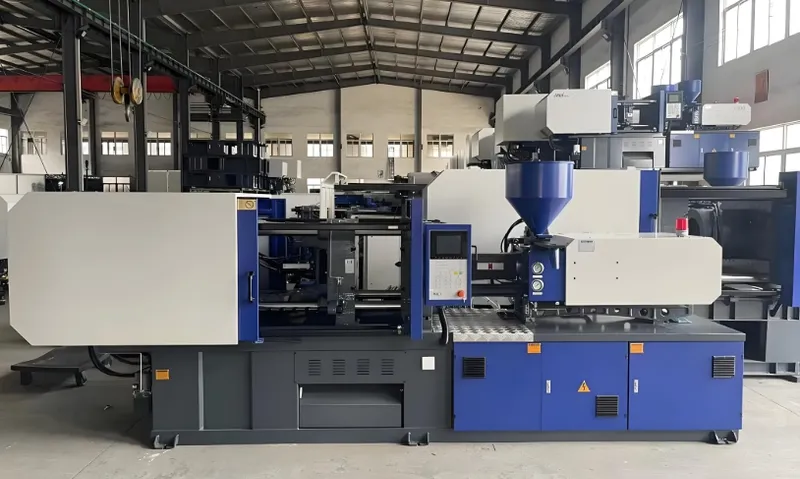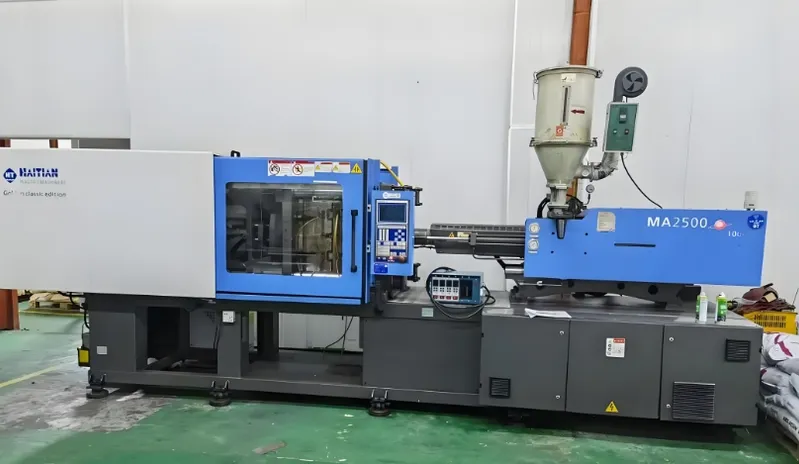世界,您好! - Copy
Plastic injection molding is a cornerstone of modern manufacturing, enabling the production of complex plastic parts with high precision and efficiency. At the heart of this process is the injection molding machine, whose capacity determines the size, complexity, and volume of parts that can be produced. Understanding the capacity of these machines is crucial for manufacturers to select the right equipment for their needs. In this article, we delve into the intricacies of injection molding machine capacity1, exploring its definitions, classifications, applications, and technical details. Whether you’re a seasoned professional or new to the field, this comprehensive guide will equip you with the knowledge to make informed decisions about injection molding technology.
Injection molding machines vary widely in capacity, typically measured by clamping force2 (10 to 2,200 tons) and shot size3 (a few grams to over 10,800 grams), determining the size and volume of parts they can produce.
Understanding machine capacity is essential for optimizing production and ensuring part quality. Delve deeper to explore how different machine types and materials influence capacity and applications.
Injection molding is the most cost-effective process for high-volume plastic part production.True
Due to its high automation and ability to produce complex parts quickly, injection molding reduces per-part costs significantly in large production runs.
All plastic materials can be processed using any injection molding machine.False
Different materials have specific processing requirements, such as temperature and pressure, which may necessitate specialized machines or configurations.
- 1. What is the Capacity of a Plastic Injection Molding Machine?
- 2. What are the Typical Applications of Injection Molding Machines?
- 3. What are the Pros and Cons of Injection Molding Compared to Other Processes?
- 4. What is the Full Workflow of the Injection Molding Process?
- 5. How Do Different Materials Affect Machine Capacity?
- 6. What are the Key Design Considerations for Injection Molding?
- 7. How to Decide if Injection Molding is the Right Process?
- 8. What are the Related Technologies in Injection Molding?
- 9. Conclusion
What is the Capacity of a Plastic Injection Molding Machine?
The capacity of a plastic injection molding machine is primarily defined by two key parameters: clamping force and shot size.

-
Clamping Force4: This is the force applied by the machine to keep the mold closed during the injection process. Measured in tons, it determines the maximum size of the mold that can be used. A higher clamping force allows for larger molds and, consequently, larger parts.
-
Shot Size: Also known as injection capacity5, this refers to the maximum amount of plastic that can be injected into the mold in one cycle. Typically measured in ounces or cubic centimeters (though sometimes in grams), it influences the volume and weight of the part that can be produced.
These two factors together define the machine’s ability to produce parts of varying sizes and complexities. For example, a machine with a clamping force of 100 tons and a shot size of 10 ounces might be suitable for small to medium-sized parts, while a machine with 500 tons and 50 ounces could handle larger components.
Classification of Injection Molding Machines
Injection molding machines can be classified based on their capacity and drive system.

-
By Capacity:
-
Small Machines: Typically have a clamping force of up to 100 tons and are used for producing small parts like caps, closures, and medical devices.
-
Medium Machines: Range from 100 to 500 tons and are suitable for medium-sized parts such as automotive components and consumer goods.
-
Large Machines: Have a clamping force above 500 tons and are used for large parts like appliance housings and industrial components.
-
-
By Drive System:

-
Hydraulic Machines6: Use hydraulic pumps to generate clamping force and injection pressure. They are robust and suitable for high-force applications but can be energy-intensive.
-
Electric Machines7: Utilize electric motors for all movements, offering higher precision, energy efficiency, and faster cycle times. They are ideal for clean-room environments and precision molding.
-
Hybrid Machines: Combine hydraulic and electric systems to balance performance and energy efficiency, providing versatility for various applications.
Understanding these classifications helps manufacturers select the appropriate machine for their specific production needs.
Hydraulic machines are more energy-efficient than electric machines.False
Electric machines are generally more energy-efficient due to their precise control and reduced energy consumption during idle times.
Machine capacity directly affects the size and complexity of parts that can be produced.True
Larger clamping force and shot size enable the production of bigger and more intricate parts.
What are the Typical Applications of Injection Molding Machines?
Injection molding is utilized across a wide range of industries, each with unique requirements for machine capacity.
